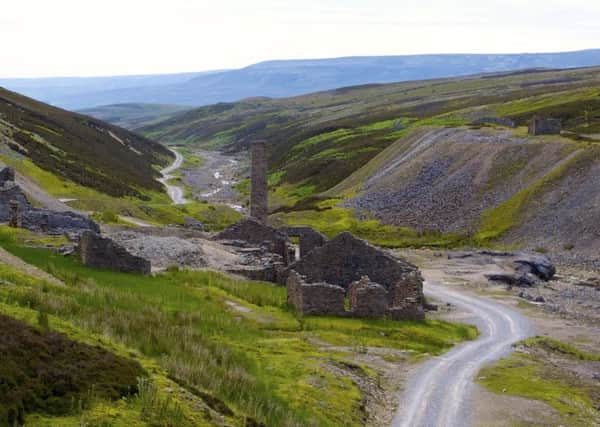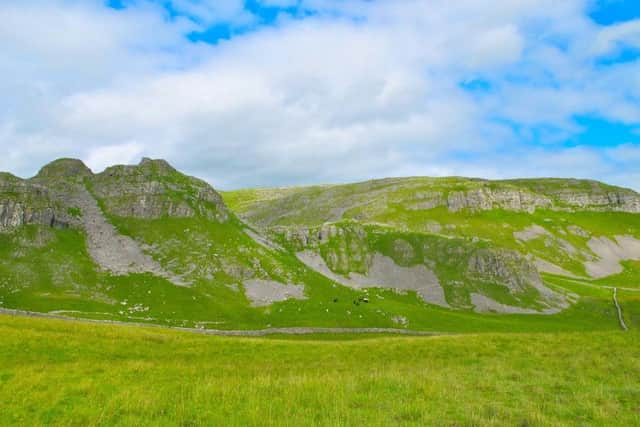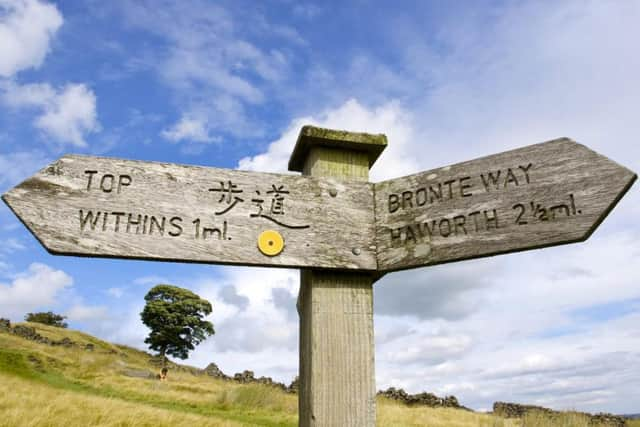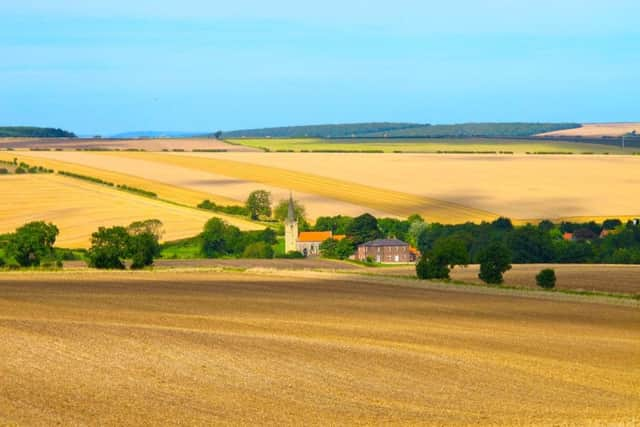Off the beaten track: Download Yorkshire’s best walks


To me the word suggests an unpremeditated, casual attitude to walking, and I can imagine many who called themselves ramblers half a century ago would set off into the countryside with only a rough idea of their route, especially since the Ordnance Survey’s finely detailed 1:25000 scale maps were not widely available then and comparatively few walking guidebooks had been published.
Now, though, we plan almost every step before leaving home. Maps have become masterpieces of accuracy and there are GPS versions on phones to keep us on a path which long ago might’ve been ploughed up or washed away. In addition to a vast library of guides in bookshops by authors such as Alfred Wainwright and Yorkshire’s own Colin Speakman, there are also cut-out-and-keep routes in newspapers like The Yorkshire Post. No surprise, then, that country walking has become Britain’s second favourite leisure activity. Only shopping is more popular.
Advertisement
Hide AdAdvertisement
Hide AdSince 2007 I have compiled walks published in The Yorkshire Post’s Country Week section, beautifully mapped and designed by my colleague Graeme Bandeira. After completing my 250th route, their combined total of 1,500 miles measuring a bit more than if I’d walked from Leeds to John o’Groats then turned round and slogged south to Land’s End, it is interesting to look back over my shoulder at the challenges, near-disasters and laughs.


Like postmen, the bane of a walking writer’s life is the hostile dog and they always strike without warning. Before GPS pinpointed my location with laser precision I occasionally couldn’t find the start of a right of way, and it was to seek help that I knocked on the door of a cottage near the village of Cowling. The door turned out to be loosely open, and as it swung right back some kind of lurcher appeared in the hall. Within a couple of seconds its teeth were sunk into my left thigh.
Once bitten, as they say, except that it’s not always possible to escape. Near Burnsall in Wharfedale I heard loud barking come from a farm and a few seconds later saw a sheepdog sprint toward me. Frozen to the spot with fear, it suddenly struck me that the dog now about to attack was totally silent. Finally, it came to an abrupt halt in front of me and spat a tennis ball in my direction, vigorously wagging its tail with anticipation. Game on.
Cattle are also unpredictable. Legally, a farmer isn’t allowed to put a bull over 10 months old in a field which carries a public right of way if it’s one of seven recognised dairy breeds, and other breeds of bull are banned unless accompanied by cows or heifers. Walkers are supposed to look at the Ramblers’ website for a list of these, but in my experience I’ve never had time to go online with my smartphone to identify which breed is advancing menacingly towards me.
Advertisement
Hide AdAdvertisement
Hide Ad

The day I was chased across a field in the Yorkshire Wolds there were no bulls, just a herd of snorting Friesian heifers propelled down a steep grass bank by a potentially lethal mix of curiosity and gravity, and they would have trampled all over me if I hadn’t managed to leap across a barbed wire fence, ripping my waterproof trousers.
The vagaries of England’s weather have produced many sticky situations, one of them quite literally. The wet summer of 2007 eventually forced me to throw away my Vibram-soled boots and adopt wellies as my walking footwear of choice. After days of unremitting downpour, a few miles from Ripley Castle I got stuck in mud so deep and glutinous it threatened to devour me like a wildebeest in quicksand on some African game reserve.
In early 2010, after one of the biggest dumps of snow on Yorkshire for 50 years, I came within perhaps half an hour of catastrophe on the southern ridge of Whernside, the highest peak in Yorkshire, when I found the snow too deep to reach the summit in daylight. Having left it late to go back the way I’d come, I aborted my walk by sliding over the steep flank of West Fell. Exhausted and frozen to the marrow I struggled through near darkness towards the guiding light of the Old Hill Inn, sprawling full-length into the River Doe along the way.
The pressure to find different walks has taken me to parts of Yorkshire where I had never set foot, and opened up great landscapes. I’m impressed by the gentle Pennine uplands to the south of Skipton, the view from lovely Pinhaw Beacon above Lothersdale being especially good. And en route to the summit of Ingleborough, the search for a new path took me to what has become my favourite corner of the Yorkshire Dales, Crummack Dale to the north of Austwick. On that April day in 2011, when Kate and Will were exchanging vows in Westminster Abbey, there must have been 100 walkers having a Royal Wedding party on Ingleborough’s summit.
Advertisement
Hide AdAdvertisement
Hide Ad

It’s hard not to be impressed by how Yorkshire’s industrial heritage has melded with the landscape, the old lead mines of Swaledale and Grassington Moor becoming more like rocky outcrops, especially in snow, and I never take for granted the network of canals and superb walks their towpaths make possible. Even within urban areas there are walks which seem entirely rural, like the Meanwood Valley Trail which begins next to Leeds University, and the green lung of Cockers Dale between Leeds and Bradford.
Suggesting alternatives away from busy honeypots is one of the aims of The Yorkshire Post’s walking column. So on a fine day, many walkers swarm around the dramatic Hole of Horcum in the North York Moors, yet 20 miles to the south they could find the no-less scenic but almost deserted chalk valley of Millington Dale in the Yorkshire Wolds. I know where I’d rather be.